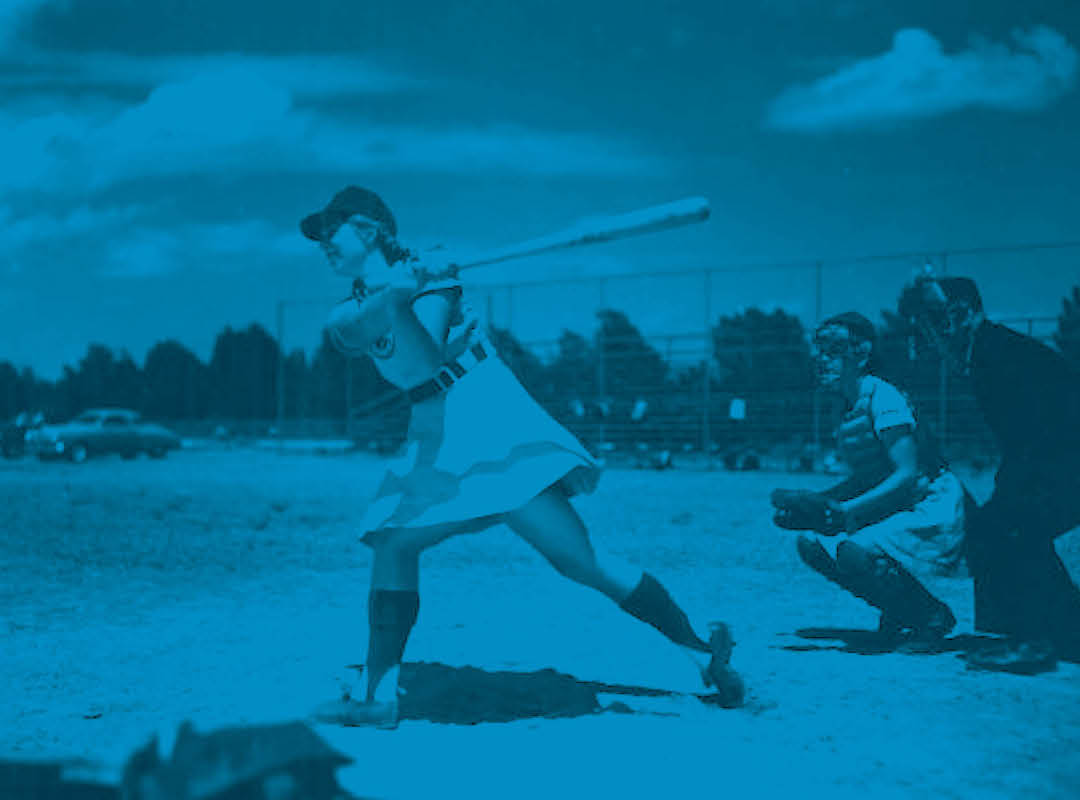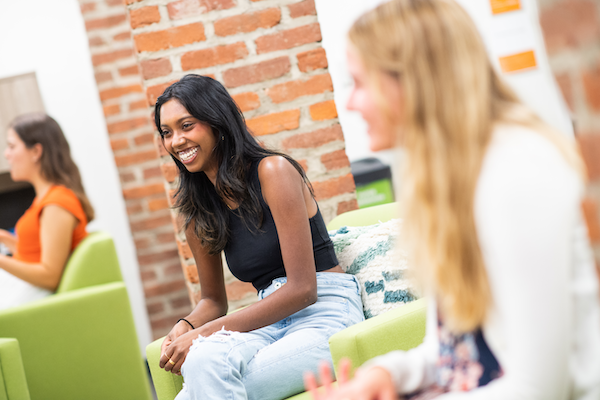
In my house, we embrace nostalgia. My teen is fascinated by the 80s culture that shaped my own teen years. Last summer, we watched Top Gun together in preparation for Top Gun: Maverick. I'm not sure that hearing their Mom had the exact shade of coral lipstick that Meg Ryan wears was enough to make up for the shock of Goose's death. While I felt bad when I realized how much that scene shook the teen, there was a tiny part of me that appreciated the fact that not every single plot point has been spoiled by the internet.
This summer, we've been revisiting two touchstones from my 80s experience: Dirty Dancing and A League of their Own. We dip in and out of them whenever they are replaying on cable (which seems to be on an every-other-day basis). As I prepare for my professional transition and my family's personal one, these two films are resonating in new ways. As their respective plots unspool around the issues of their temporal settings (the WWII-era Midwest, the New York Catskills of the 1960s), I'm humbled by the generations of dedicated advocacy for women's rights and equality that I inherited and reminded of the work still to be done.
Dirty Dancing gave me some of my earliest vocabulary for grappling with questions of bodily autonomy. In curious ways, Lisa and Penny were extreme opposites, marked by the contrast between Lisa’s gawky stiffness and Penny’s easy fluidity, who suffered in painfully similar ways when Robbie objectifies them. Lisa was the social peer meant to be “talked into” sexual activity. Penny was one of “those women” (as he so callously dismisses her) whom he disavows the minute she tells him she’s pregnant. The film explored standards of masculinity across class differences with a nuance I couldn’t begin to appreciate in 8th grade, while laying down markers defining the treatment women deserve.
And it exposed me for the first time to the perils of pregnancy that women face. Penny’s desperation in resorting a traveling backroom abortionist; the US’s horrific and climbing rate of maternal mortality, especially for women of color; the utterly predictable, heartbreaking results when women lose access to the healthcare needed to preserve their well-being and save their lives: these are all threads on the same length of fabric. The CDC reports that 1,205 U.S. women died of maternal causes in 2021, compared with 861 in 2020 and 754 in 2019. State committees’ reviews of maternal deaths suggest that 84% of pregnancy-related deaths are preventable.
A League of Their Own deepened my burgeoning feminist analysis of the dominant roles for women on offer to me in the 80s and 90s. When Evelyn’s husband tells her she can’t leave their son Stillwell at home anymore when the team is playing away games, she enacts the juggling act that so many US mothers are forced to take on, given the deplorable state of childcare options in our country. By bringing her child to work with her, Evelyn becomes an unwitting precursor of so many mothers forced to perform secondary childcare during the early years of Covid.
Penny Marshall offered (can I make a bad pun?) a double play argument about the benefits of looking to a person’s skills over appearance and the profound losses imposed by racial segregation. The scout’s initial rejection of Marla because she isn’t pretty nearly costs the team one of their most powerful hitters. And in a scene propelled by silent dignity, the Black women watching on the sidelines school the team on the possibilities lost by limiting the league to white women only. Before I knew the term “intersectional,” the film forced me to confront power differentials and interlocking systems of oppression.
The CDC reports that 1,205 U.S. women died of maternal causes in 2021, compared with 861 in 2020 and 754 in 2019. State committees’ reviews of maternal deaths suggest that 84% of pregnancy-related deaths are preventable.
My generation was introduced to computers in grade school, sent to the newly designated, makeshift computer lab to learn how to make blinking orange cursors move across black-green screens. We were rewarded with 10 minutes to play Oregon Trail. I remember when a friend saved her waitressing tips for a year to buy a basic Dell computer for her dorm room, mainly so that she and her boyfriend could email across the 300+ miles that separated their college campuses. I myself didn't get my first email address until spring of my senior year. I wrote my senior honors theses in longhand, typing them on the electric work processor I used. By the time I was writing my Master's thesis, I was working on a laptop, having learned to compose on the screen. But for my deepest thoughts, I still have to work them out by handwriting them in one of the half dozen notebooks I keep just for that purpose.
Life is changing. (How many universities, UVA included, have dedicated time this past spring to thinking about ChatGP and AI, contemplating the impact these new technologies may have on learning?) Those of us whose academic years straddled the analog-digital divide know the adjustments todays' students may be called to make. In the abstract, these developments can seem scary. But we have choices in how we respond.
There's a Jane Goodall quote on the cover of the notebook that I scribbled my notes for this column in: "What you do makes a difference, and you have to decide what kind of difference you want to make." This August will be the first one since 2016 that I do not stand before the new intern cohort to welcome them to the Women’s Center. There are six files saved on my laptop, named “Welcome back – intern orientation 8-XX” (don’t ask me where the 7th one is… it’s somewhere lost in computer space). Each year, I share a variation of Goodall’s wisdom with them: Research into effective social change movements tells us that successful change efforts depend upon people playing a variety of roles, each of which are needed, I tell them. And to be an effective advocate for change, you need to discern the role(s) you are best suited to play. Effective work for social justice matches your talents to your temperament to the organization that is best positioned for the kind of work you want to contribute.
I know that the only answer must begin with building the connections that bind our community.
The iconic lines from each film underscore the toxic masculinity that compresses women's options, from Jimmy Dugan's incredulous "There's no crying in baseball" to Johnny's "Nobody puts Baby in a corner." There are so many ways our world tries to shrink women’s lives and belittle women’s contributions in both the public and the private arenas. The last challenge that I will offer as the Women’s Center Director to us all is to take Goodall’s words to heart: “decide what kind of difference you want to make.” Decide what kind of community you want to live in, and bring that community into being.
The subtext running beneath the plot of both films is a deep longing and profound need for community, the kind of community where you know you belong. I’m not (exactly) a Luddite, but I do worry about what we lose when we replace human connections with screen time. I’ve tracked an attitudinal shift in my students’ responses over the years to the revelation that I didn’t have a cell phone in college: from nearly snarky incredulity that I had a social life to bemusement to curiosity to now, it seems, wistful envy.
There's a quiet moment on the bus when Doris confesses,
"Always made me feel like I was wrong, you know? Like I was some sort of a weird girl or a strange girl or not even a girl, just because I could play. I believed them, too. But not anymore, you know? I mean, look. There's a lot of us. I think we're all all right."
This need is shared in intimate settings, underscoring the vulnerability that feeds it. When Johnny tells Baby that he's been fired, he counters her despairing anger over Kellerman's mistreatment of him with gratitude for the risks she took: "Nobody has ever done anything like that for me before."
Maybe this is the path to addressing the issues and inequalities that I outlined above. Some days, I fear this is a facile answer that cannot possibly make a difference. Other days, though, days when I feel more grounded and connected, I know that the only answer must begin with building the connections that bind our community. The recent story of the four children lost for 40 days in the Amazonian jungle in Columbia reminds me that Indigenous lifeways model practices of a “moral orientation that enables children like Lesly to be simultaneously autonomous and socially responsible” – and that this orientation is deeply grounded in the context of a “close-knit community, where work in the forest, in the garden, and work with and for other people is central to ideas about living well.” This is not a context we can appropriate for ourselves – but it is an ethos of interconnectedness and orientation we can aspire to emulate and cultivate in our own community.

